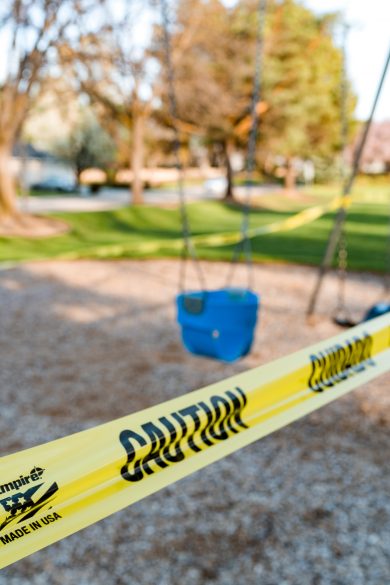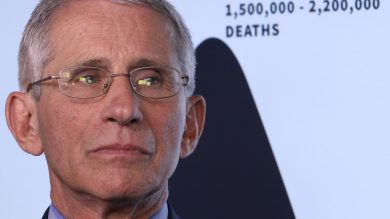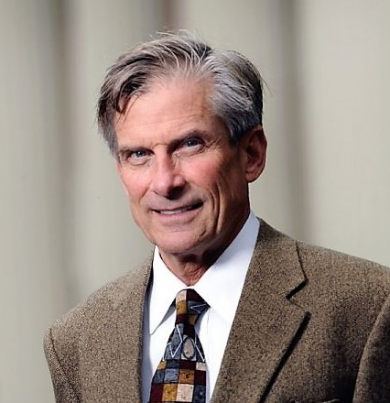Questions that Matter in the Time of Pandemic
Building on The Humanities Institute’s long-running Questions that Matter events and course programming, we invite you to now consider Questions that Matter in the Time of Pandemic. Through this series of reflections we ask how the stories of this pandemic and Humanistic inquiry into questions of science, leadership, education, racial disparity, and global cultural understanding can shape solutions to the COVID-19 crisis.
To launch our new series, the Humanities Division’s 2020 Distinguished Graduate Student Alumni Awardee and former Chair of the NEH William “Bro” Adams shares his thoughts on histories of plague, the “planetary interconnectedness” that COVID-19 reveals, and the interdisciplinary approaches that we need to employ to come to terms with the current moment.
Making Sense of Covid-19
William “Bro” Adams
One of the novel experiences of life in the time of the coronavirus is the sensation of being lost. Waking in a dark and unfamiliar room; traveling in a foreign country without a map; drifting, rudderless, on the ocean. All metaphors lead to the same uncomfortable conclusion: we’ve never been here before. There are probably a few people left on the planet who experienced the great flu pandemic of 1918-19 (the so-called “Spanish flu”, which in fact wasn’t Spanish at all), in which perhaps 100 million people died. But for most of us the current moment is utterly unprecedented. We’ve never been ordered to stay inside before; we’ve never experienced the low-grade panic of going to the grocery story with a mask made from an old bandanna that was buried in the sock drawer; we’ve never watched, helplessly, as the world economy collapses, with implications we are only beginning to grasp.
Of course, in another sense “we” have been here before. The Greek historian Thucydides recorded the terrible plague that descended upon Athens in 429 BCE at a critical moment during the Peloponnesian war. Athens lost the war and was never again a great power. It might have lost anyway, but the plague mangled the army and brought terrible suffering to the city and its people in the bargain. In the 14th century, the Black Death made its way slowly along the Silk Road from central Asia to Europe in wagons and trading ships carrying rats carrying fleas carrying the bacteria Yersina pestis. The first European outbreak of the Plague occurred in Messina, Sicily in 1347. It went on from there to ravage the continent of Europe, killing at least one-third of the population. Some historians suggest that it took Europe centuries to recover.
 Between these two famous ordeals, there were many, many others. And there have been many since, including, in this country, the European diseases that devastated Native Americans in the colonial and settlement periods and the scourge of influenza that killed 675,000 Americans in the immediate wake of World War I. It is still too early to say how well the histories of prior pandemics will help us get our bearings in this one. But we understand in a new and urgent way the relevance of history to our current circumstances.
Between these two famous ordeals, there were many, many others. And there have been many since, including, in this country, the European diseases that devastated Native Americans in the colonial and settlement periods and the scourge of influenza that killed 675,000 Americans in the immediate wake of World War I. It is still too early to say how well the histories of prior pandemics will help us get our bearings in this one. But we understand in a new and urgent way the relevance of history to our current circumstances.
Even so, the sensation of novelty cannot be easily brushed away. For like the SARS-CoV-2 virus itself, the world it has turned upside down is also new, or at least different. Earlier in the pandemic, a lifetime of a month or so ago, The New York Times published a digital map that traced the spread of the virus from Wuhan, China to the rest of the world. The visual narrative begins with a small, pulsing red dot in Wuhan. Slowly, other small dots—first carriers—emerge, migrating to other parts of China and then, with building speed and intensity, to other parts of the world. Within a few weeks, a few dots become thousands as the virus encircles the globe. During the Black Death, it took years for Yersina pestis to make its way from central Asia to Europe. In this era of ubiquitous international air travel, it took a few weeks for SARS-CoV-2 to reach every country in the world.
Social scientists and humanists have been talking about globalization for years, but the pandemic has revealed new depths and dimensions of our planetary interconnectedness. While the global economy is a familiar fact of everyday life, it was still news to many of us that much of the equipment we need to fight COVID-19—masks, rubber gloves, chemical reagents—come, like the virus itself, from China. A hot spot anywhere in the world is now a threat to every place in the world. And there’s a good chance that an effective vaccine will come from cooperative endeavors among laboratories around the world. They will be speaking to one another, like the rest of us, across the broadband internet.

The attendant questions here are not just about trade policies and commerce and who makes what for whom. They are equally about the meaning of national identities and boundaries in a world where one can fly from Wuhan to visit relatives in Istanbul or Paris or Dubai or New York in a matter of hours. There are different ways of dealing with the unalterable facts of globalization. For the cosmopolitans among us, the pandemic reveals the truth of our circumstances and makes the very idea of national identities and borders anachronistic. For others, the pandemic provides the best possible reason to pull back and inward and to regard the rest of the world with suspicion. The next period of our political lives in the U.S. is likely to turn in part on this sharp interpretive difference.
The virus brings other revelations. The central importance of science to contemporary societies has come to the forefront of public conversation and debate in a new and powerful way. It seems clear now that there will be no real solution to the current crisis until there is a vaccine and drugs to prevent and treat the COVID-19 illness. In the meantime, we hang on the words and models of epidemiologists to learn how we should behave and what we are likely to experience in the next weeks and months. This prominence is itself divisive; some rejoice and others lament yet another example of the regime of experts.
“The lived experience of this disease, or any disease, is also beyond science. For that we need stories and storytelling.”
But even as science looms large, we are learning something important about its limits. There is much that scientists do not understand, and may never understand, about the virus, where it came from, the disease it causes, and how it can be stopped. Maybe there will be a vaccine in 12-18 months; maybe it will protect most people. Or not. And there are dimensions of the disease and its treatment that are not scientific at all. A philosopher I know recently remarked that “triage” is not at root a scientific concept. He’s right. In conditions of raging illness and scarce resources, how do medical practitioners decide who to treat or not to treat? Who is first, second, third in line? Who will get the respirator and who will be left to struggle and perhaps die? Is the life of an older person worth less (or more) than a younger person? Is it more important to treat a stricken doctor than it is to treat a nameless person who comes in off the street? Medical practitioners around the world are being forced to answer such questions all day, every day. Not science.
The lived experience of this disease, or any disease, is also beyond science. For that we need stories and storytelling. We are beginning to hear the stories of those who survived, those who did not, and those who treated them. Knowing about the nature of this disease as it is lived will be very important to medical professionals, but it will also be important to the rest of us as we try to come to grips with the meaning of what we are living through.
“Novelty, uncertainty, and ambiguity are the new normal, and nowhere more conspicuously than in the public sphere.”
Novelty, uncertainty, and ambiguity are the new normal, and nowhere more conspicuously than in the public sphere. Government officials make models and offer predictions, then adjust their models and predictions based on the public’s response and the evolving behavior of the virus. The math here is as precise or imprecise as human behavior, which is not very precise at all. Let us imagine for a moment political leaders—governors, mayors, country health officials, especially— of good faith and the best intentions. They are called upon to apply their imperfect knowledge of what is happening right now to the shape of things to come. As they do, they must consider best medical practices, on the one hand, and the growing carnage of the economic shut down, on the other. They must weigh short-term losses (and gains) against long-term losses (and gains). They weigh suffering now against suffering later. And they must do this in the constantly shifting winds of public opinion and political pressure from differently interested groups of citizens and politicians. It’s a time when good leaders and bad leaders alike are ruthlessly exposed. A different sort of triage.
Of course, some political leaders have neither good faith nor good intentions. They are driven by the desire for advantage, or reelection, or momentary notoriety. They, too, are being exposed. History will not be kind to them.
Military historians talk about “the fog of battle.” Battle fog is produced by the large number of factors—people, morale, weapons, tides, terrain, weather, good decisions, bad decisions—interacting in complex and finally unpredictable ways. We’re learning that pandemics are foggy, too. For our political leaders, as for generals, finding a way through the fog is the order of the day.
Even good leaders can get it terribly wrong in the treacherous currents of the moment. Thucydides recounts how during the plague in Athens the great Pericles decided to order the citizens of Athens to take shelter within the city walls. The antithesis of social distancing. Of course, Pericles did not know about Yersina pestis or the bugs that cause typhus, typhoid fever and Ebola, the other candidates for the disease that plagued Athens. He did what seemed prudent for the city at the time. Disaster ensued, including his own death.

Dr. Anthony Fauci, director of the National Institute of Allergy and Infectious Diseases
Right now, one of the most impressive leaders in the United States is Dr. Anthony Fauci, Director of the National Institute for Allergy and Infectious Diseases. Fauci is a gifted scientist and researcher, and he has a long history of combating epidemics, including AIDs. But what impresses most is his ability to make sense of very technical material and to convey it clearly, compellingly, and compassionately to the public. One learns from the very recent profile of Fauci in The New Yorker that he is the product of a Jesuit liberal arts education at Regis High School in New York and then at Holy Cross in Worcester, Massachusetts. At both Regis and Holy Cross, Fauci was steeped in the classics, history, philosophy, and languages. At Holy Cross, he majored in Greek Classics and Premed. “We did a lot of Classics, Greek, Latin, romance languages… We took many credits of philosophy, everything from epistemology to philosophical logic, etc. But we took enough biology and physics and science to get you into medical school.” You can see Fauci’s liberal arts training in action every evening in the White House briefing room.
In addition to teaching us something about leadership (and its absence), the virus has also placed a glaring light on the structural faults in American life. According to a very recent post by the Centers for Disease Control and Prevention, African Americans, Hispanic Americans, and Native Americans are heavily overrepresented among those who experience serious illness and death from COVID-19. The underlying issues should be familiar to us: disparity of economic condition and access to healthcare and housing, among others. Still, it’s revealing. And it underscores the fact that the crisis we are living through is simultaneously biological, medical, social, and political. Its fullest understanding and resolution will need to be aggressively interdisciplinary.
 Last but certainly not least, there is the cultural. The currently dominant (and titillating) origin story for SARS-CoV-2 involves a so-called “wet market” in Wuhan and the migration of the virus from animal to human hosts. The identity of the animal is still up for grabs. A bat? A pangolin? Or was a pangolin an intermediary for a virus lodged in a bat? The answer may never be known. But consider, for a moment, the cultural reverberations of the term “wet market”, where live animals—chickens, fish, and yes, perhaps pangolins—are butchered on demand. SARS-CoV-2 is likely a “zoonotic” virus, that is, one that has “jumped” from animals to humans. Much of the world has now concluded that it jumped in the Huanan Wholesale Seafood Market in Wuhan. This raises all kinds of questions, beginning with how people from different cultural contexts and traditions relate to food. In large parts of the world, including China, the on-demand preparation and consumption of wild animals is widely accepted and practiced, or at the very least tolerated. In other parts of the world—in this country, for instance—such practices cause recoil. In both directions, we see new meanings of “foodways” and new food for ethnographers. While they are at it, the ethnographers will also want to look again at the remarkably interesting issue of the boundaries (or lack thereof) between species—and, relatedly, between culture and nature.
Last but certainly not least, there is the cultural. The currently dominant (and titillating) origin story for SARS-CoV-2 involves a so-called “wet market” in Wuhan and the migration of the virus from animal to human hosts. The identity of the animal is still up for grabs. A bat? A pangolin? Or was a pangolin an intermediary for a virus lodged in a bat? The answer may never be known. But consider, for a moment, the cultural reverberations of the term “wet market”, where live animals—chickens, fish, and yes, perhaps pangolins—are butchered on demand. SARS-CoV-2 is likely a “zoonotic” virus, that is, one that has “jumped” from animals to humans. Much of the world has now concluded that it jumped in the Huanan Wholesale Seafood Market in Wuhan. This raises all kinds of questions, beginning with how people from different cultural contexts and traditions relate to food. In large parts of the world, including China, the on-demand preparation and consumption of wild animals is widely accepted and practiced, or at the very least tolerated. In other parts of the world—in this country, for instance—such practices cause recoil. In both directions, we see new meanings of “foodways” and new food for ethnographers. While they are at it, the ethnographers will also want to look again at the remarkably interesting issue of the boundaries (or lack thereof) between species—and, relatedly, between culture and nature.
Then again, this might be a story about science. An article in a recent issue of the French newspaper Le Monde recounts French involvement in the development of an advanced virology laboratory outside of Wuhan. The article reports the nervous reflections of a French-trained Chinese scientist on the possibility of an accidental release of SARS-CoV-2. The work of the laboratory in question involves work on viruses extracted from bats. Another kind of jumping, with different but no less worrisome implications.
But no matter how good the vaccines, the medicines, and our understanding of where we are and how we got here, I suspect that there will always be something left over from this drama that will continue to haunt.
Gaining leverage on the sensation of being lost, adrift at sea, is a matter of creating context, of framing experience, of making meaning, of gradually establishing a sense of where we are. All our ways of meaning-making are now in play, or need to be—scientific and medical, certainly, but equally historical, cultural, literary, social, geographical, and every possible combination in between. Framing, context, location, meaning will emerge from the mashups among these ways of knowing the world, along with vaccines and medicines and preparations for the next pandemic.
But no matter how good the vaccines, the medicines, and our understanding of where we are and how we got here, I suspect that there will always be something left over from this drama that will continue to haunt. It’s the reminding of our ultimate vulnerability, of our inescapable dependence on our bodily existence and of the body’s vulnerability to biological forces and creatures. This is an ancient story, rehearsed endlessly in the long drama of human history, but as new as today.
 William D. Adams is a graduate of the History of Consciousness program at UC Santa Cruz, and the Humanities Division’s 2020 Distinguished Graduate Student Alumni Awardee. He served as the Chair of the National Endowment for the Humanities from 2014 to 2017. In that capacity, he initiated several new grant making programs under the banner of The Common Good: The Humanities in the Public Square. Upon leaving NEH, Adams was named a Senior Fellow at the Andrew W. Mellon Foundation, where he continued his national advocacy on behalf of the humanities.
William D. Adams is a graduate of the History of Consciousness program at UC Santa Cruz, and the Humanities Division’s 2020 Distinguished Graduate Student Alumni Awardee. He served as the Chair of the National Endowment for the Humanities from 2014 to 2017. In that capacity, he initiated several new grant making programs under the banner of The Common Good: The Humanities in the Public Square. Upon leaving NEH, Adams was named a Senior Fellow at the Andrew W. Mellon Foundation, where he continued his national advocacy on behalf of the humanities.
In 2016, Adams presented “Wicked Problems”: The Humanities in the Time of STEM, the 15th Annual Sidhartha Maitra Memorial Lecture, at UC Santa Cruz. In that lecture he examines the ways that solving social ills requires the insights of the Humanities.
Featured image: street art mural in Los Angeles, California, by Corie Mattie.